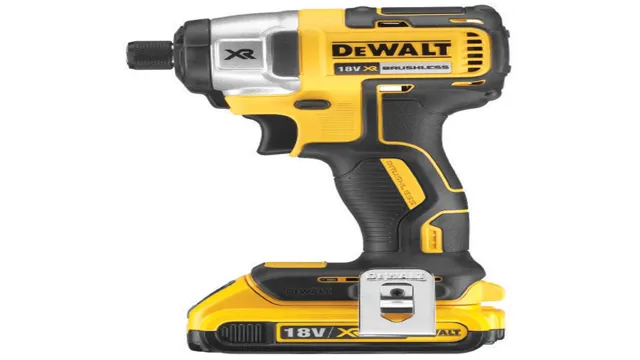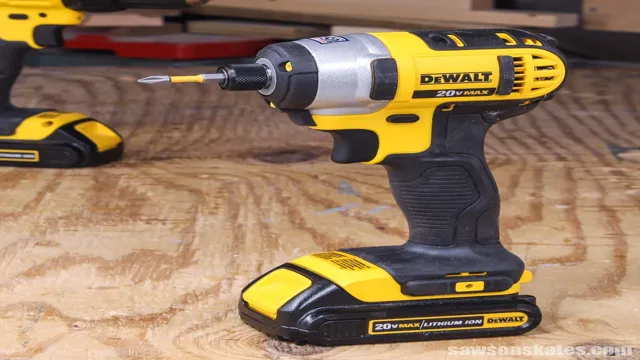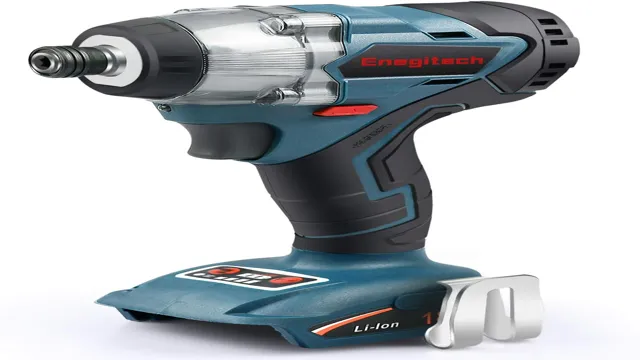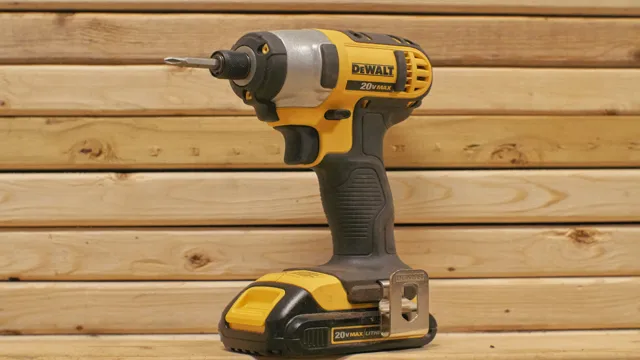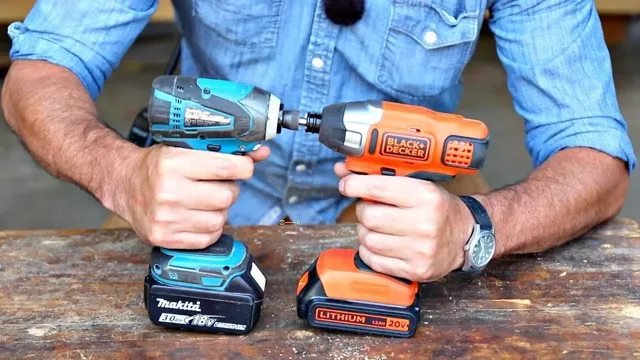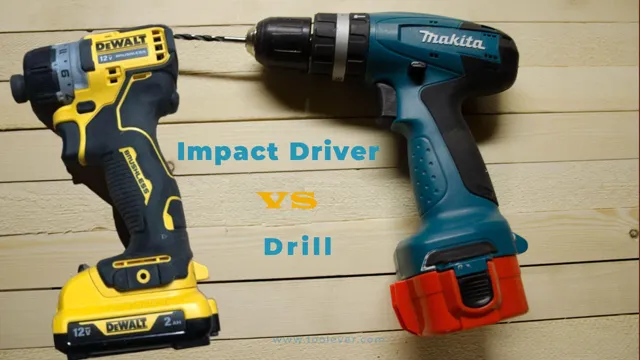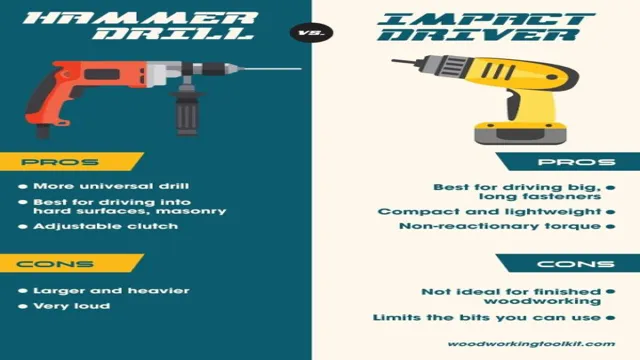Do I Need an Impact Driver for DIY Projects? A Comprehensive Guide
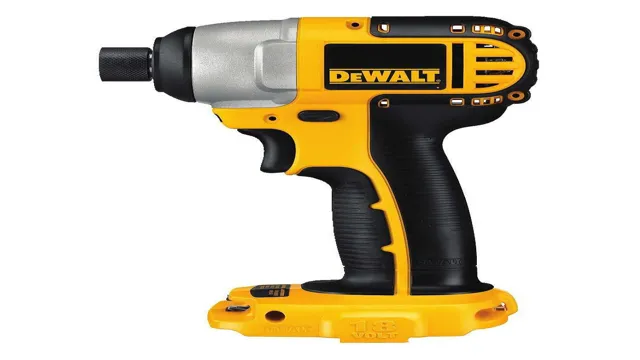
When it comes to completing DIY projects or professional construction work, having the right tools can make all the difference. One of the most common debates in the construction world is whether or not to invest in an impact driver. While some argue that a standard drill can do the job just fine, others swear by the power and efficiency of an impact driver.
So, how do you know if you need one? Think of it like this: if a regular drill is like a bicycle, an impact driver is like a motorcycle. Sure, you can still get around on a bike, but a motorcycle is faster, more powerful, and can handle tougher terrain. In this blog, we’ll delve deeper into the benefits of an impact driver and help you determine if it’s the right tool for your next project.
What is an Impact Driver?
If you’re someone who often works on DIY home improvement projects, then an impact driver can be a valuable addition to your toolkit. An impact driver is a power tool that delivers a strong, sudden rotational force to drive screws and bolts with greater torque than a traditional drill. They are designed for heavy-duty tasks such as driving long screws into tough materials like hardwood or metal.
With an impact driver, you can work faster and more efficiently, even in tight spaces. So, to answer your question, if you want to complete your home projects more efficiently and with less effort, you definitely need to invest in an impact driver. It will make your job easier and leave you with a more professional looking finished product.
How Does an Impact Driver Work?
An impact driver is a tool used for drilling screws and fastening bolts. It is a battery-powered device that is designed to deliver high torque output, making it perfect for challenging jobs. Unlike a normal drill, an impact driver has a special mechanism that converts the rotational force of the motor into sudden, high-torque bursts.
This mechanism puts a lot of force on the screw or bolt, driving it into the material with greater ease. The high torque output of an impact driver makes it ideal for tough jobs, such as loosening corroded bolts or driving long screws into dense material. Additionally, impact drivers are smaller and lighter than traditional drills, making them ideal for use in tight spaces or for extended periods of time.
Overall, impact drivers are a very useful tool that can help you tackle even the most difficult fastening jobs with ease.
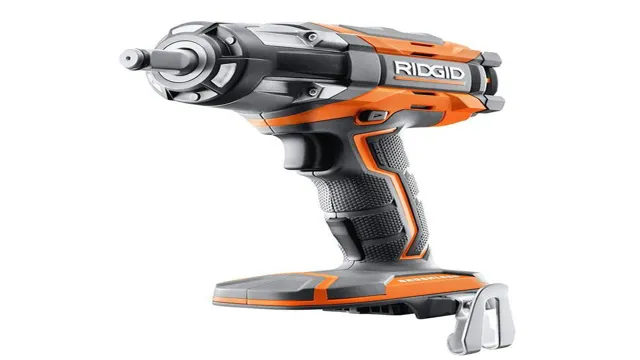
What Are the Advantages of an Impact Driver?
An impact driver is a handy tool that is quite popular among DIY enthusiasts and professional contractors. It is a power tool that is designed to provide additional torque when driving screws, making it easier and faster to undertake your projects. Unlike a traditional screwdriver or a drill, an impact driver utilizes a rotational and downward force to drive screws into the material without causing damage.
Using an impact driver has several advantages, such as reducing fatigue, higher torque, and faster drive times, which helps you to get your job done quicker. Additionally, these tools are available in cordless or corded models, making them versatile and portable, ensuring you can work anywhere you like. By using an impact driver, your DIY projects become more manageable, allowing you to complete them quicker and with less physical exertion.
When to Use an Impact Driver
If you’re wondering if you need an impact driver, the answer depends on the type of DIY projects you undertake. Impact drivers are powerful tools that have become popular among DIY enthusiasts due to their high torque, which makes them ideal for heavy-duty tasks, especially in tight spaces. If you’re planning to install decking, assemble furniture, or work on a car, then an impact driver is a useful addition to your toolkit.
It’s important to note that an impact driver is not a replacement for a drill, which is better suited for drilling holes and driving screws into softer materials. However, if you frequently work with hardwoods or metals, then an impact driver is a must-have tool that will save you time and effort. In short, if you’re frequently working on projects that require a lot of driving power, then investing in an impact driver is definitely worth considering.
Common Uses for an Impact Driver
Impact Driver An impact driver is a versatile tool that can handle a range of tasks, including driving screws, nuts, bolts and other fasteners with greater speed and power than a regular drill. It’s especially effective for heavy-duty and precision work, thanks to its enhanced torque and rotational force. Use it for projects like deck building, framing, and furniture assembly, where you need to drive long screws and fasteners into tough materials like wood or metal.
An impact driver is also great for automotive and mechanical work, loosening and tightening stubborn bolts with ease. Its compact size and lightweight design make it easy to maneuver into tight spaces and work in awkward positions, making it a reliable partner for DIY enthusiasts and professional contractors alike.
When to Use a Drill Instead
Impact Driver When it comes to DIY projects or construction work, it’s important to know when to use a drill and when to use an impact driver. While drills are great for simple tasks like drilling holes, impact drivers are better suited for tougher jobs like driving screws and bolts into hard surfaces. Impact drivers have more torque and can apply more force than a drill, which makes them better for jobs that require more power.
Additionally, because of their impact mechanism, impact drivers apply less pressure on your wrist and hand, which means you can work for longer without feeling fatigued. So, if you’re working with tough materials like concrete or hardwood, or if you’re dealing with large screws or bolts, an impact driver is the tool for you. But for lighter tasks like hanging pictures or assembling furniture, it’s best to stick with a regular drill.
When to Use Both Tools
When to Use Both Tools – When to Use an Impact Driver If you need to drive large screws into dense materials, an impact driver is the tool for the job. An impact driver’s high torque output is ideal for tightening up screws, nuts, and bolts, and is especially helpful for tasks that require a lot of force, such as deck building or assembling furniture. An impact driver’s hammering action exerts an incredible amount of force, allowing you to work more efficiently and with less effort.
However, if you need to drill holes, or drive screws into softer materials such as drywall or plywood, then a drill is the tool you need. A drill is also ideal for tasks where precision is key, such as when making pilot holes before driving screws. If you’re working on a project that involves both tasks, then it’s best to use both tools: start with the drill to make pilot holes, and then switch to the impact driver to finish the job.
By using both tools, you can ensure that you’re working quickly and efficiently, while also achieving the precision and accuracy you need.
Choosing the Right Impact Driver
Are you unsure if you need an impact driver for your DIY projects? It ultimately depends on the type of work you plan to do. If you will be driving long screws into dense materials such as hardwood or metal, an impact driver will provide the necessary power and torque to get the job done quickly and efficiently. However, if you mostly work with smaller screws and softer materials, a regular drill may suffice.
It’s important to consider the weight and size of the impact driver as well, as a smaller one may be more comfortable to use for extended periods of time. So, do you need an impact driver? Assess your project needs and decide if it’s worth the investment for the added power and efficiency it can provide.
Considerations When Selecting an Impact Driver
When it comes to choosing the right impact driver, there are a few key considerations to keep in mind. First and foremost, you’ll want to think about the type and number of projects you’ll be working on. This will help you determine the ideal size and power of the impact driver.
Additionally, you’ll want to pay attention to factors like battery life, ergonomics, and noise level. If you’re going to be using the impact driver for extended periods of time, it’s important to choose one that won’t strain your hands or arms. Finally, it’s worth investing in a high-quality impact driver from a trusted brand to ensure that it’s both reliable and durable.
By keeping these factors in mind, you can select an impact driver that meets your specific needs and ensures that you’re able to complete your projects quickly and efficiently.
Top Impact Drivers on the Market
If you’re in the market for an impact driver, it can be confusing to know which one to choose. With so many options available, it’s important to consider your needs before making a purchase. Some of the top impact drivers on the market today include the DEWALT DCF887B, the Bosch IDH182-02, and the Milwaukee 2753-2
These powerful and durable tools are perfect for both professionals and DIY enthusiasts alike. When choosing the right impact driver, consider factors such as torque, speed, and battery life. It’s also important to think about the type of work you’ll be doing and the materials you’ll be working with.
By taking the time to research and compare different models, you can find the perfect impact driver to suit your needs and get the job done with ease.
Conclusion
In conclusion, the answer to whether you need an impact driver is simple – if you enjoy making your DIY projects faster, easier, and more efficient, then yes, you need an impact driver! With its unique rotational force, an impact driver can tackle even the toughest drilling and fastening tasks with ease, saving you both time and effort. So if you want to elevate your DIY game to the next level, invest in an impact driver today – your hands (and your projects) will thank you!”
FAQs
What is an impact driver and how is it different from a regular drill?
An impact driver is a power tool that delivers high torque output and is designed to drive screws and bolts quickly. Unlike a regular drill, an impact driver uses rotational force as well as concussive blows to drive screws and bolts with less effort and greater speed.
What are the benefits of using an impact driver?
Impact drivers offer several benefits, including faster and more efficient driving, increased torque output, and reduced strain on the user’s wrist and arm. They are also compact and lightweight, making them easy to maneuver in tight spaces.
Can impact drivers be used for drilling holes?
While impact drivers are primarily designed for driving screws and bolts, some models can also be used for drilling small holes in wood and other materials. However, they are not as versatile as a regular drill and are not recommended for drilling large or deep holes.
What kind of projects are best suited for an impact driver?
Impact drivers are ideal for projects that involve driving large screws or bolts into dense materials such as wood, metal, or concrete. They are commonly used in construction, woodworking, and automotive repair.
How do I choose the right impact driver for my needs?
When choosing an impact driver, consider factors such as the maximum torque output, the battery life, and the overall weight and size of the tool. Look for a model that is well-suited to the types of projects you will be working on, and that is comfortable to use for extended periods of time.
Can impact drivers be used with different types of screwdriver bits?
Yes, impact drivers can be used with a variety of different screwdriver bits, including Phillips, flathead, hex, and Torx. Be sure to use the correct size and type of bit for the screws or bolts you are working with.
Do I need special safety gear when using an impact driver?
While impact drivers are generally considered safe to use, it is still important to wear appropriate safety gear, such as eye protection and gloves. Be sure to read the manufacturer’s instructions and follow all safety guidelines to minimize the risk of injury.

